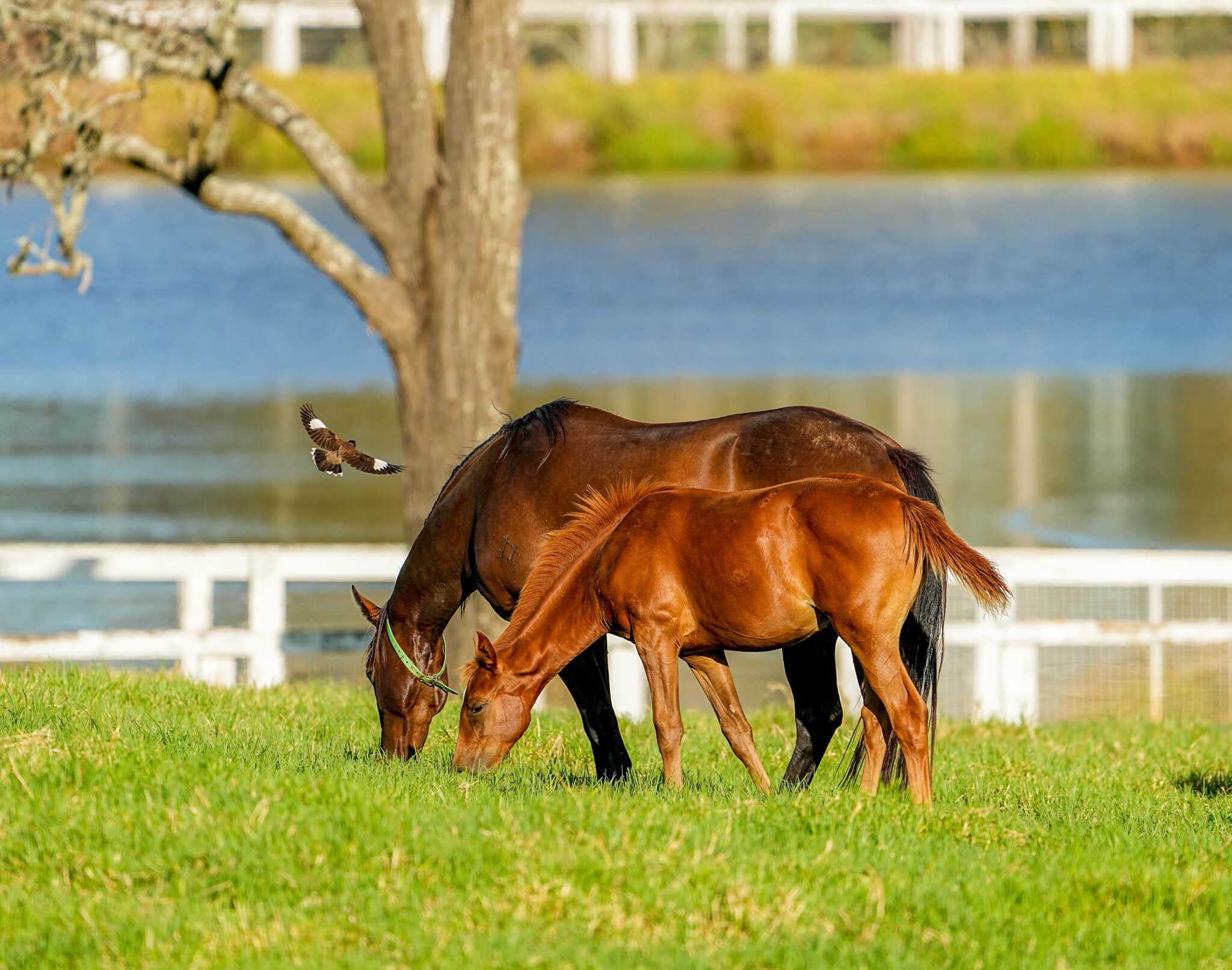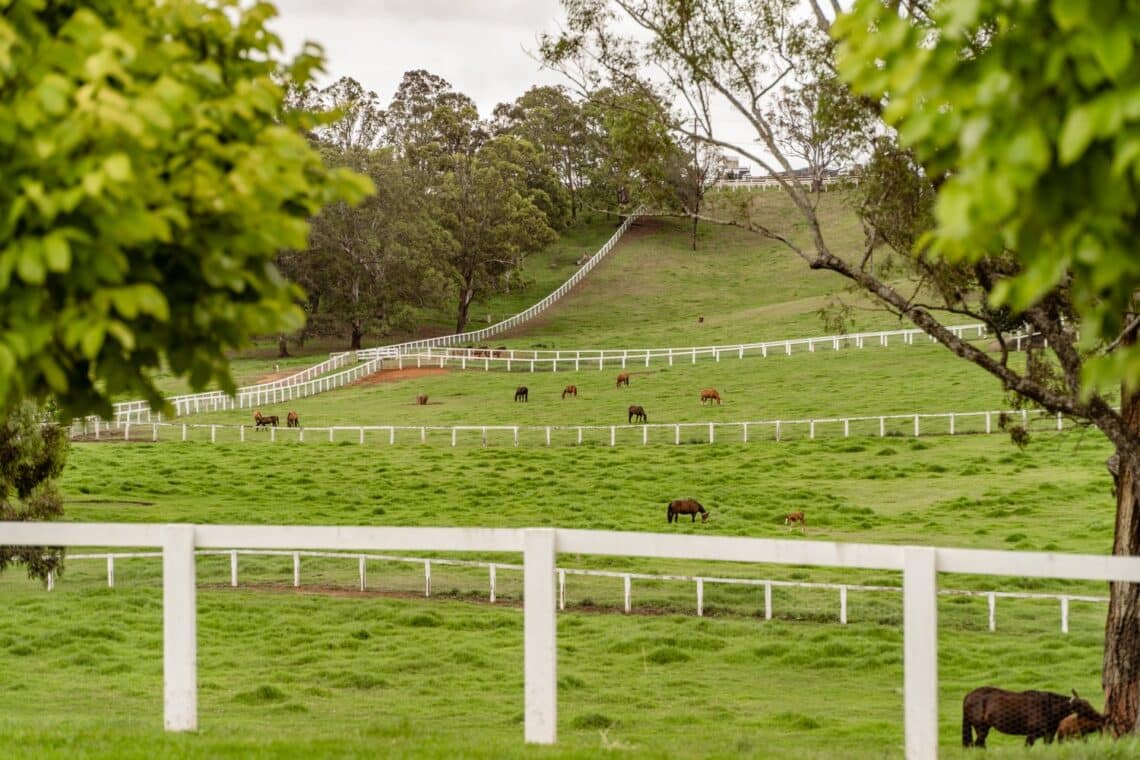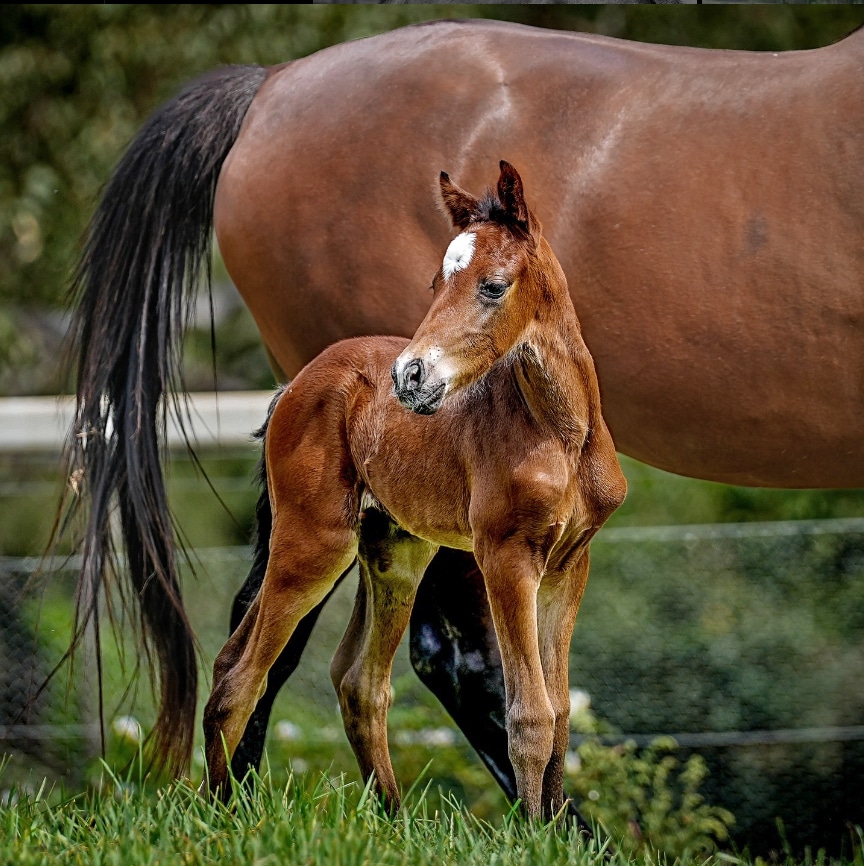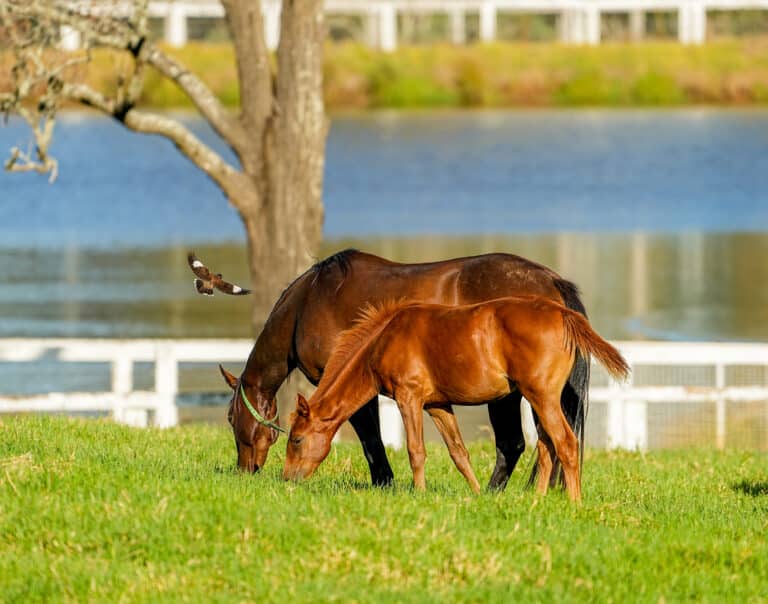
Hi-tech foals
We spoke to JOHN PRICE, Director of Catalina Stud, about cloning and intra-cytoplasmic sperm injection (ICSI), to learn more about what they are and what they are not.
Specialising in cutting-edge techniques, Catalina Stud is recognised as one of Australia’s most advanced equine reproduction facilities. With a global reputation for excellence and innovation, the Catalina team focus not only on reproduction, but also on the holistic management, health and welfare of every horse in their care.
We started our conversation with John Price, Catalina’s Director, by asking him about the benefits of cloning in comparison to breeding by natural means:
JP: I think it’s very important to state at the outset that in my opinion, cloning is a tool for breeding but is not in any way intended to replace breeding. It cannot be used to improve your breed, in fact cloning is a flat line when it comes to the genetic evolution of your herd.

However, where cloning comes into its own is, for example, when you have a mare you’ve successfully competed with for most of her life. You haven’t taken the opportunity to put her in foal and by the time she gets to 12 or 13 years old, she’s likely to have fertility issues. But cloning gives you the opportunity to breed from her.
Or, you’ve got a stallion who’s been a popular sire and he has a paddock accident and dies suddenly, cloning allows you to continue that line. Or, perhaps you’re a breeder in the sporthorse scene with a very successful horse. You accept a big offer to sell them overseas, which makes it very difficult to keep any breeding rights. But if you take a biopsy before they leave Australia, you can continue their bloodline here as well as benefiting from a lucrative sale.
Broadly speaking, cloning is a tool for breeding, but it doesn’t replicate breeding. It just allows you access to genetics that you might not otherwise have had due to circumstances similar to the examples I’ve just given.
EH: What does cloning involve?
JP: There are a number of different ways to clone, but we’re one of a handful of facilities around the world, the others are in Argentina and Italy, that use the very latest technology. The best and most appropriate cells in the body for cloning are from the sternum. In a one time procedure, we take bone marrow from the sternum to access the cells we need. The other benefit to this method is that, unlike taking a skin sample, it’s a relatively non-invasive and safe procedure in which we use sedation rather than a general anaesthetic.
Once we have the bone marrow, which gives us the genetic material to make unlimited clones, we culture it in our lab, a process that involves removing all the bone, fatty tissue and other materials that aren’t required, until you are left with the raw cells.
The next stage is through a process called Oocyte Pick-Up (OPU), in which an ultrasound guided probe that comprises a dual lumen needle is inserted into the mare’s vagina. One needle flushes fluid into the ovaries to remove eggs from the ovary wall, while the other needle sucks the fluid out, bringing the eggs with it. The procedure is usually very well tolerated by the mare.

Using OPU, we take eggs from one of the mares in our herd, remove the nucleus from a single egg and replace it with a nucleus from the cell of the horse being cloned. So, all the genetic information from the cloned horse is being implanted into the mare’s egg. Think of it as the way switching a SIM card from one phone to another imports the information on that card into the new phone.
The egg is then kept in an incubator where the nucleus binds to the host egg. A week later you have an embryo which is then implanted into one of our recipient mares.
EH: Why do you favour Standardbreds?
JP: We have a herd of mainly Standardbred mares who have a very good life out in the paddock. What they do for us is give us eggs and carry embryos to term. I really like the breed because they’re much better doers and have better feet. They’re also much better mums and have a great temperament. They’re sensible horses who don’t do silly things in paddocks.
EH: Are the cloned foals exact replicas?
JP: They are 99.98% genetic replicas of the horse you have cloned. So you always have the same base colour. If they had socks or a blaze, the foal will have those markings too, but the sock might be on the other leg, the blaze may be narrower or wider. A star may be larger or smaller. But fundamentally they’ll all have the same attributes and many of them are identical.
EH: What causes those variations?
JP: Although we haven’t researched this, I believe it’s due to differences in temperature, nutrition and so on during gestation. I’ve cloned horses that were born all over the world and I’ve noticed that horses in climates colder to the horse being cloned tend to have subtle differences, while horses from similar environments are almost identical.
EH: What’s the difference between conventional embryo transfer and intra-cytoplasmic sperm injection (ICSI)?
JP: A mare’s cycle usually starts with smaller eggs, and then there will usually be one or two of an appropriate size as their cycle evolves. In conventional embryo transfer you wait until you have the right size egg, inseminate the egg, and then flush the embryo out and transfer it to a recipient mare. In this process, you’re relying on access to four to eight straws of semen from the stallion, on the mare being of an appropriate age to produce an embryo, and you’re waiting for the right time of year. With ICSI it’s very different. We want to have lots of those smaller eggs, so we’re looking for the opposite of what we would usually be looking for, and other than avoiding very hot or very cold weather, we can carry out the procedure all year round.
The process involves putting the client’s sedated mare in the crush, where once again, we use OPU to harvest her eggs. But instead of removing the nucleus as we would with cloning, we take a single sperm, inseminate the egg, and create an embryo. The embryo then goes into an incubator for about a week before it’s implanted into one of our recipient mares.
EH: What are the advantages with ICSI?

JP: There are a couple of big advantages. Firstly, with a valuable competition mare, you can do ICSI year-round, you don’t have to try work your competition schedule around it. The mare is on our property for about 48 hours and the procedure itself takes around 45 minutes. So, if you’ve got a show in Queensland and a show in Victoria, you can call into our property in North Richmond NSW along the way. The mare can be given light work the day after the procedure, but then she’s basically back in full work. The procedure is very low-impact.
Additionally, there are no issues around hormonal differences in the mare, and it’s kinder on older mares because they don’t have to create their own embryos. By the time they’re 12 to 13 years plus, their fertility starts to decrease, but they produce eggs their entire lives, so we can use ICSI with them at any age.
Another huge benefit with ICSI is we only need to use a single sperm. So, with conventional embryo transfer you would probably get one service, one foal, out of four straws of semen. Using ICSI, with a fifth of one straw we can breed about five mares. So that’s 25 mares for one straw, and 100 pregnancies for the four straws that would previously have produced a single foal.
If you’re interested in learning more about Catalina Stud’s extensive range of expert equine reproductive services, visit their website or call (02) 4570 6000.



